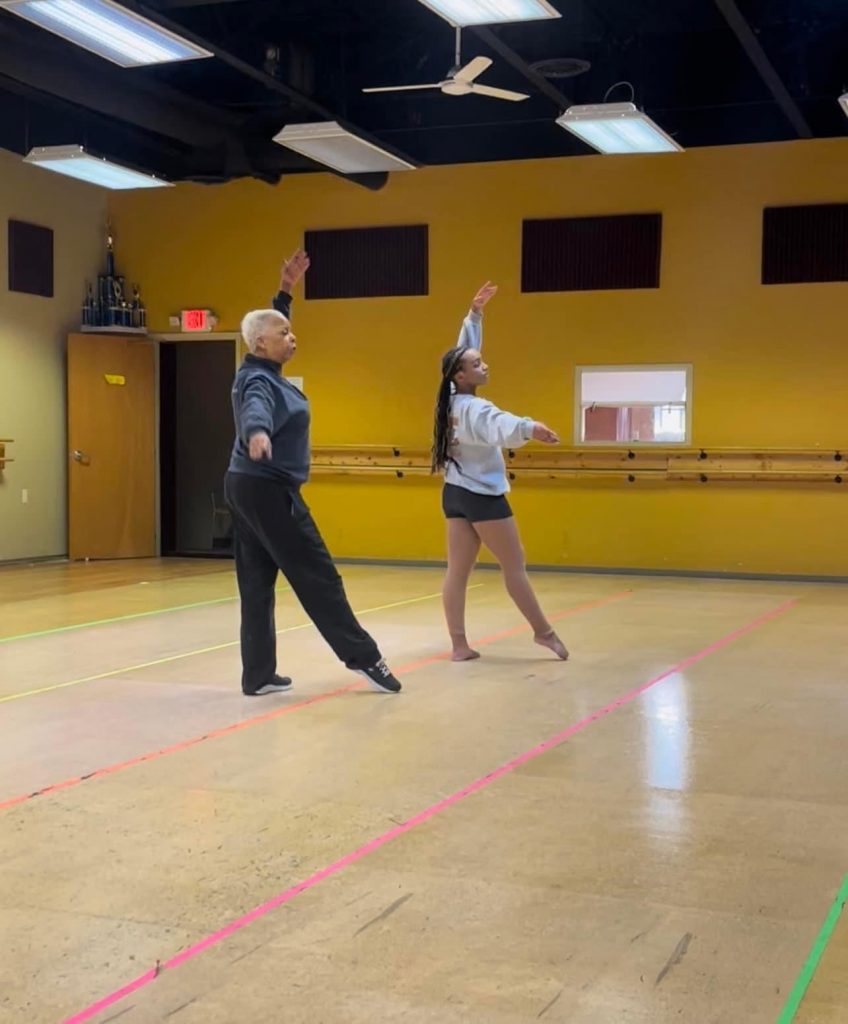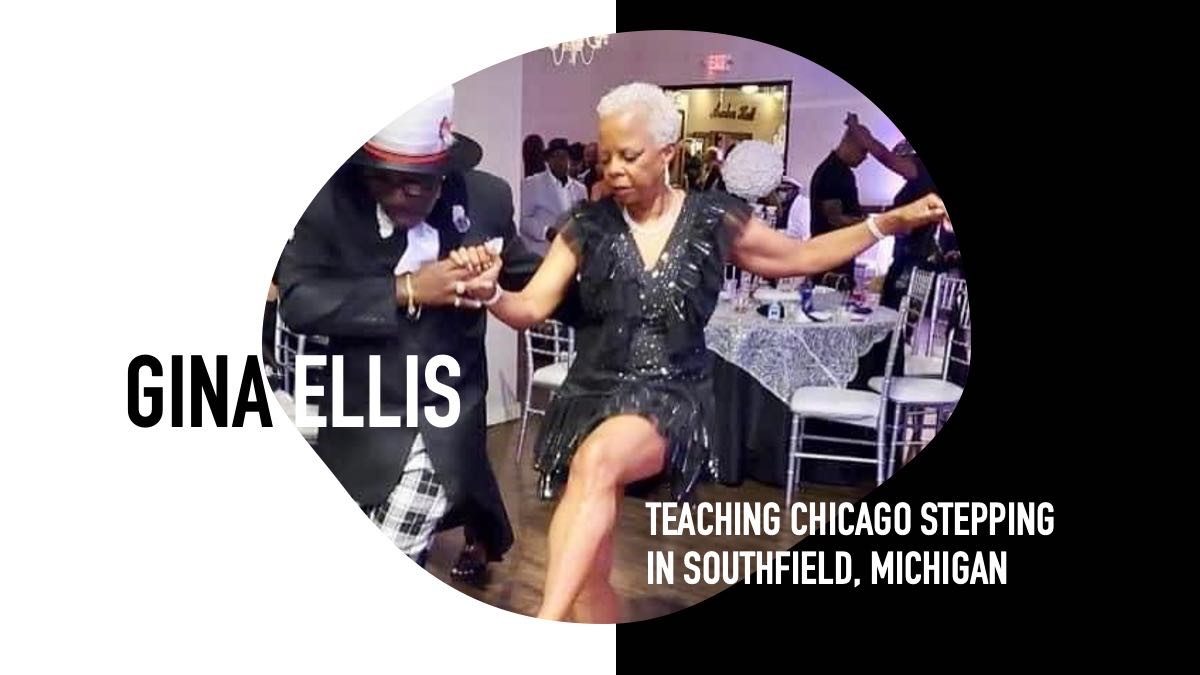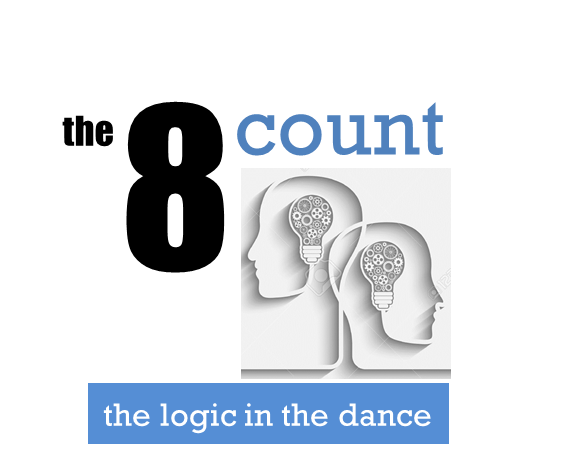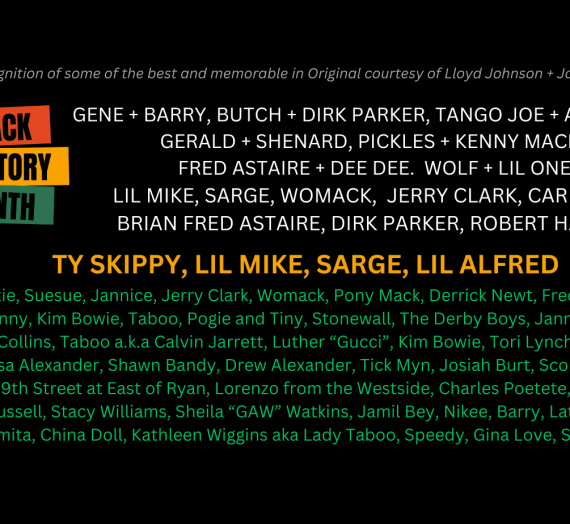
Introducing Gina Ellis

Gina Ellis was born and raised in Detroit, Michigan. After graduation from Eastern Michigan University where she was a Physical Education Major, Gina moved to New York. She knew she wanted to teach dance, but being on the gymnastics team in college took her away from dance. Her move to New York was to supplement her dance teacher training and she only planned to live there for two years. She got a scholarship at the Alvin Alley American Dance Center.
Two years turned into eighteen wonderful and successful years. Working in New York, Gina appeared in the Broadway and National Company of “The Wiz” with Stephanie Mills, “Malcolm X” with Denzel Washington, and was the Assistant Choreographer, Body Double for Lynn Whitfield and a dancer in HBO’s Josephine Baker Story, to name a few. Upon moving back to Detroit, Gina taught Dance for 20 years at Renaissance High School in Detroit.
The Interview
How were you introduced to Chicago Stepping?
Sherry Gordon and Kamaal Smith were the first people that I saw in Detroit doing Chicago Stepping. I remember they danced to a song by Brandy called “What About Us” which I had never heard before and I was taken by the dance and the music. I couldn’t figure out the dance by just watching it but I knew this was a dance I wanted to learn.
At that time, there were only a few people teaching Chicago Stepping. I started out with James Paisley and the group SLNG – Sophisticated Ladies and Gents. My money was funny, so I would take a class here and a class there. It was not coming together so I stopped for many years. Then I resumed taking classes. I was living downtown, probably in the mid-2000s, and I drove all the way out to Yesterdays which was about a 12-15 mile drive. Sitting in my car I said, “I am not ready and I am not coming out again until I know this dance.” I started going every week, sometimes twice a week for about six months to get my feet under me. Because I was a dancer I could pick it up, but did I really know what I was doing? I was just following, but not understanding.
What is your dance background and what other dance styles do you know?

Classically, I started out in ballet. When I moved to New York I studied different disciplines of modern and jazz. And then eventually, that led me into tap, which took me into commercial work. I’ve studied almost every form of modern and a lot of different styles of ballet and jazz. That is my professional side.
Socially, I do the BOP, Salsa, Latin Hustle, not well, but I can do them and Graystone which is a style of the Social. When I did Malcolm X, I was introduced to the Lindy Hop – really Lindy Hop and the Jitterbug. I was fortunate to work with Frankie Manning and Norma Miller, who were in Whitey’s Original Lindy Hop. They were the ones who taught me the Lindy and the Jitterbug. When I moved back to Detroit, I was with a Detroit ballroom group. We Socialed and Bopped growing up which was a little different from the Detroit Ballroom.
What made you fall in love with Chicago stepping?
To me, Chicago Stepping is to social dance what jazz is to music. The beauty of jazz is you have to understand the foundation. The beauty of Jazz music is the improvisation. The beauty of Chicago Stepping is the ability to play with the steps and the music while engaging in non-verbal communication, which is what dancers do! And self-expression. The possibilities are endless! I love the ability to connect with the music and express myself through this dance. AND…I LOVE THE MUSIC!
I’ve always loved music. The music drives everything and I’m Old school. Although I like Old School, I also like New School, and In-Between School. As long as it’s good music. I like Old School music because it’s real instruments. There’s more to listen to and therefore more to play with. The new music for the most part is very systematic. It’s just straightforward. There’s nothing in between. You may play with the lyrics. That’s where you’re going to find your
syncopation and rhythm or what you’re going to play with – the voice or the lyrics, but the music is just kind of boring.
What is your favorite song to step to?
That is not an easy question. I don’t have a favorite. I just like good music. For instance, there is a new song that I heard on the radio. It is called Yamz by Masego and Devin Morrison. I love that song and it has a nice slow bop. There is also a new version of You Want My Love featuring Earth Wind & Fire featuring Lucky Daye and then, I love You’re the One by Leela James. Some of my favorite music is old Four Tops, old Earth Wind & Fire. Everybody loves this really old song by Cleo Soul, When I’m in Your Arms that came out in 2006. It just has to be good music with good lyrics. Those are some of my favorites. But, you could put on some old Four Tops or Billy Stewart or Carmichael and I’m living!
Why did you start teaching Chicago Stepping?

I have been assisting various people in the same way that I assisted when I was a professional dancer. I’ve always been able to pick up and analyze movement. I can figure out the problem and break it down so that anybody can learn whatever it is. At Renaissance, I also taught an Aerobics class. During the fall semester, we would do yoga, stretch and tone, and conditioning. The next semester I introduced the students to social dance forms and had my friends come in and teach. Over the years, the students were exposed to Detroit Ballroom with Al McClinton, Salsa with Bobby Green, Bop with Kevin Collins, and Chicago Stepping with Drew Alexander. And they loved it!
Because I found a method of teaching that fundamentally is easy to learn without all the confusion. It was introduced to me by Dave Maxx. It places less emphasis on the foot placement and more concentrates on the beat. For me, I think I just got the nerve because this method and the foundation are so clear. It gave me the nerve to say OK. I’m going to teach Chicago Stepping and I’m going to try a totally different community. What I need a student to have is the desire. I’m the teacher. I will get you from where you are now to the next phase, the next level. That’s my job. Your job is just to come with an open mind.
Why do you only teach beginners?
I want to start from scratch. And for my first class, I wanted to start with beginners to test the method and build dancers from the floor up. One of the hardest things to do is to unlearn something or change bad habits. I have taken Chicago Stepping classes for many years, most of which were quite confusing and not well organized. However through the confusion, I developed my own method and once I was introduced to Dave’s method, it all became crystal clear! After four classes, so far, it’s working.
What are your goals for your students?
I want my students to be able to dance to and enjoy the beauty and the experience that Chicago Stepping has provided for me. I want them to appreciate the dance, the culture, and history. It’s great exercise physically and mentally and emotionally. It’s a release. When they come to my class, in six months I want them to be able to feel comfortable enough to do this dance. Will they have all the nuances and intricacies and all of that? No, but I want them to have a good foundation so they can go to the set and enjoy the beauty and the experience that Chicago Stepping offers us. That’s why we are hooked on this dance.
What did you find most challenging about starting class and what were some of the surprises on your first day?
My first day was awesome. I had 16 people in the class and out of those 16 people, only one person had two left feet. I think that in some stepping classes they move students along too fast with instruction. So not only do students not know what or why they are doing a move, they develop bad habits because they are just trying to keep up. Learning is a slow process even for those who learn quickly it’s still a process. I can’t go from the basic this month and then next month I start partnering by doing a lot of turns. There are too many levels in the basic and even more variations before we start doing more complicated sequences. People don’t like to hear this but that is why I say something that I heard from someone in Chicago:
“Stepping is one foundation with many variations.”
Everyone from Chicago, whether they live in Chicago or they live in Cleveland or wherever. has something a little different from the next person that will completely throw off and confuse most beginners.
As someone disciplined in teaching dance, what, in your opinion, makes a good dance instructor?
To be a good dance instructor you have to know your subject inside and out. You have to be proficient to be a problem solver. In order to effectively solve problems, you have to know what you’re doing so that when a problem comes up you can solve that problem because of your experience. You can look at an issue, analyze it and say quickly, oh, this person is doing this. Maybe their weight is not in the right place or their knees are too straight. Maybe they are tense and when people tense up their joints automatically lock.
It’s being able to break things down quickly, effectively and solve the problem and then have them practice it. I think because most people aren’t able to do that, they just keep demonstrating what they want students to do over and over without telling that person what he or she should do.
What do you think are the most challenging parts of stepping to learn?
For me, the most challenging part of Chicago Stepping is the partnering for both the leader and follower, but especially the leaders. Both sides need to understand and accept their role in the dance. Once that is accomplished, then it’s the nuances, understanding the silent communication which develops into a conversation that breathes through the music. This is the beauty of Chicago Stepping. For me learning to lead has been a challenge but I’m getting it. For now, I have a male assistant who is helping me.
How are you solving that problem?
I practice with a friend in Detroit, but I will be traveling to Chicago more often now. You just gotta put in the work and the time. There’s no way to get around it. I have to go where I can get what I need so that I’ll feel comfortable. And, I’ve always been a worker like that. I will go and seek and work until I feel comfortable.
What should a first time stepper expect from your stepping class?
To leave my class feeling confident with whatever I have taught that day, whether I teach one format, one variation, or three variations or whatever I teach. In the next class, I’ll review what I did in the first class and add on. Each week there is a review to help develop that comfort and confidence. To me, re-learning re-teaching is more work than just teaching it correctly the first time. I keep it simple for beginners because I want them to build the confidence to feel
comfortable. And then once we achieve that, then we’re ready to go. Then I can really start pushing you, but not in the beginning.
I want students to have fun working hard. And I want students to acquire real skills they can use in their dance; nothing crazy. I want them to develop the desire to want to learn more and get better. If you don’t have the desire or if your desire has been crushed from the very beginning then it is hard to break through that when teaching beginners or people that don’t know the dance.
What separates a beginner from an intermediate or advanced student?
Comfort period. I teach ladies’ footwork in the class where I assist on Wednesdays. Because they are comfortable with their foundation, I can start providing them with some options for footwork or to vary the basics. One instructor said:
The difference between the way people in Chicago step and people outside of Chicago is that Chicagoans do a rhythmic step.
Charnice Simmons
Once Charnice said that it was clear. Once she defined it as rhythmic stepping then that made sense. In New York when I studied tap from Caucasians – it’s clean and it’s really basic and it’s straight. I would go to an African American person and they’re putting all kinds of other sounds and clickety clicks within that. I’m saying, “Oh my goodness. What is that?!” It’s the same thing. You can step for 10 years and still just do that straight count. That’s straight basic with nothing in between. What distinguishes those levels is how comfortable you are manipulating the
beats. Long story short.
What is different about teaching Chicago Stepping than teaching other dance styles?
No different. It’s clear instruction and repetition. That’s anything learning. You need a good foundation. I have a philosophy. First, you imitate. You do exactly what was done to the best of your ability. Then you take that, whatever that foundation is, and put it into movement. I know the 8 count, the 6 count, the bop or the three beats or the 123-123-12 backward and forward. Step 2 is to assimilate. Take what you have learned and put it in your dance, without a lot of turns and footwork. Just do the basics with a partner. Once you feel comfortable doing that, create. You’re able to create because you have thoroughly gone through the process of learning a solid foundation and assimilating in different forms.
How do you encourage and expose your students to learning outside of your class?
You have to test what you have learned in class. You have to go to a set and go through that process. If you take classes with a partner, it’s easier. I didn’t take classes with a partner so I went to the sets and I sat on the side and I sat and I sat. And I watched. I would get the nerve to ask a person to dance. That was a real gauge for me, of what I knew versus what I still didn’t know.
In my class, what I eventually want to do once we understand the basic principles of partnering is at the end of every class, I’m going to put on a piece of music. We’re not doing a routine. Partners will just dance utilizing what they know, off the top. This is the opportunity for the dancers to get together and put what they have learned into an actual dance.
Once students get comfortable dancing with people that they know, they will be encouraged to attend small sets in the city that aren’t as intimidating. Stepping out to the White Party for the first time might have you standing and watching and wondering, “What do I do? How do I get a dance? “
If there is anything you wish could be easier about learning or teaching stepping what would it be?
Every single person that I know that steps and has studied Chicago Stepping says, “I didn’t learn from a count.” You may not have learned by a count when it wasn’t as popular. But, if you want to make this dance more popular and teach it to the masses, in my opinion, people, especially beginners who aren’t learning in a club or from a family member, need something to hold on to, which is going to be a count first even before they can really hear the music. They say, “Just feel the music. Listen to the music.” But, there’s a lot in the music to listen to. I can look at any two
videos on YouTube and see some people dancing to the upbeat while others are dancing to the downbeat.
When I first got to New York learning the Latin Hustle, my partner and I were fighting. I couldn’t figure out why. I’m doing the steps right. Then I figured out they were listening to 1 beat in the music and I was listening to the other beat in the same song. OK, I gotta get on that beat – the other beat. It’s the same thing.

Gina Ellis and the Secret Society of Twisted Storytellers
I am the Talent Curator for the Secret Society of Twisted Storytellers. I hire the music and the dancers. Satori Shakoor – the Producer, Founder, CEO, Executive Director – sang with the Brides of Funkenstein. When she was the moderator for The Moth – another huge storytelling international group – she thought, “If I can do this for The Moth, why don’t I create something for our stories?” Our shows are true stories based on experiences. It’s twisted because if a theme is love stories, it could be good love, bad love, love for food or love for exercise, etc. Love stories are not necessarily romantic or intimate love. It could be love for anything.
We’ve had social dance, classical dance, and folkloric. It’s a very diverse presentation of many African Americans, but we’ve had different nationalities participate, and it is beautiful. We’re going into our tenth or eleventh year. The event is every third Friday of the month. We were at the African American Museum for 8 years and then we were virtual for the last two years. March 25th will be our first regular show produced by us at Marygrove College.
Thank you Gina for all that you do for our culture. I hope for great things in all your endeavors.
Thank you and the same to you. You’re doing some wonderful things with your blog. To me, this is what this is all about – uplifting each other and especially uplifting black folks. We are beaten down all the time, so the moments when we can celebrate who we are, what we do, the way that we do it, I am all for it. In my opinion, we are the chosen people. Everybody else knows it. We don’t know it. We’ve become so reactionary, but we need to understand that we are the chosen people. Let’s carry ourselves with that kind of respect and dignity for ourselves and each other.

Gina Ellis. Celebrating a woman that has embraced storytelling, teaching and our culture through dance.

Welcome! I am the writer Sonji Stewart. These are my travel stories about my Chicago Stepping experiences, traveling from city to city to dance. I hope my stories encourage you to join me in the adventure.
Get the latest blog post by email because every stepper should be on this email list.
By clicking submit, you accept our terms & conditions. We do not share or sell your personal information.





Harold Sealls
Gina Ellis is a beautiful person. She’s a treasure and a wonderful resource, and as a teacher she’s the gift that keeps on giving.